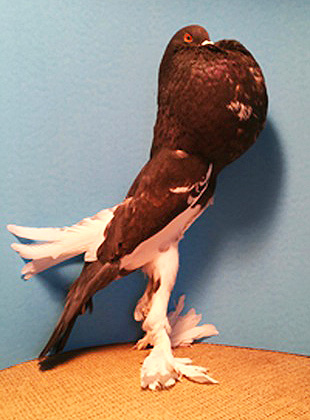|
Fillmore Historical Museum: This One is for the Birds
By Gazette Staff Writers — Friday, June 20th, 2025
Above are three Certificates of Award from the Los Angeles Pigeon Club, Inc. 20th Annual Show back in January 1933, for Lawrence B. Hinckley, or Fillmore. Photo courtesy Fillmore Historical Museum.  Pictured above is a Frank Barrachina English Pouter. Courtesy Fillmore Historical Museum Courtesy Fillmore Historical Museum Birds have long been popular pets, but at least in our area, birds were all the rage during the mid-20th century. Pigeons were particularly popular. For reference, pigeons are monogamous, but appear to after a few years will “remarry” Pigeons were especially popular, and competitions were held for conformation as well as in races. The Ventura County Star had a column called “I just Found Out” that was written by several different people. For some reason columns on birds were very popular. We couldn’t find a specific reference in the Fillmore Herald but we do know at least one person in Lawrence Hinckley raised and showed “pouter pigeons” and won ribbons. In 1933 he won three blue ribbons for two hens and one cock. The black cock was advertised for sale at $15. Not surprisingly, a pouter pigeon was an unknown entity to the writer. According to Wikipedia, “As with all breeds of domesticated pigeons, the English Pouter is descended from the rock pigeon (Columba livia), and has been developed over years through selective breeding of individuals with specific characteristics.] It is a breed of fancy pigeon, that being a type of pigeon kept by pigeon fanciers as part of the fancy pigeon group as opposed to Flying/Sporting Pigeons or Utility pigeons. The Pouter is long limbed with an enlarged crop, and overall a large body.” There are over 30 different breeds of Pouter pigeon, but it was probably an English Pouter Pigeon that Lawrence Hinckley bred. One of his winners was a red hen who might have looked something like this. So, when Lawrence won the ribbons, he would have been 33 years old and meeting Mildred Combs and establishing the Artists’ Barn were years in the future. In the larger Ventura County, raising pigeons and especially racing them was extremely popular but not without problems. The February 19, 1940, Star reported that 92 pigeons were stolen from breeders in Miners Oaks and Ventura. They were valued from $5 to $15. The Star said that Ventura County Sheriff Howard Durley “unaccustomed to hunting pigeon stealers, was at a loss to state what fate might have befallen the birds” (Ventura County Star, February 14, 1940). Surprisingly just three days later the Star report the 80 of the stolen birds were recovered at a Los Angeles “bird market”. Don’t all pigeons look alike? If you said this to a pigeon fancier, you would get a scathing look at the very least. Pigeons raised by a serious breeder have metal tags put around the ankle at birth so identifying the birds was rather simple. The tag is usually used to identify pigeons competing in races to know who the winner was, second place, etc. The pigeons are not infallible, Weather, especially heavy fogs can throw them off and they may or may not return to their home “loft.” Not all pigeons were for show or racing. Some had actual jobs. In 1902 there was an election for Supervisor for the position that represented Santa Paula, Fillmore, Piru and the surrounding area. Hugh Warring didn’t like either of the two candidates running so he ran against them. Not surprisingly, the Piru vote was critical to who won the race. But Piru was over a day’s ride to Ventura so those in Ventura, including apparently Hugh Warring were on pins and needles. The Ventura Free Press addressed this problem using homing pigeons. Prior to the election, the Free Press sent homing pigeons owned and trained by Ed Mercer to Piru. The journey by road between Piru and Ventura was stated to be about 100 miles, but as the crow flies (or in this case the pigeon) the distance was said to be only about 40 miles. The Free Press lost little time in publishing the results (Hugh Warring won the seat) and for the next few election cycles continued to make sure everyone knew they were the ones to come up with the idea and effectively use it. Why couldn’t the telegraph be used I can’t say. Although many liked pigeons for what they could do, there was another group (and there may have been some crossover) enjoyed hunting pigeons. In 1945, the “bandtail pigeon” season would be most of the month December with a limit was 10 pigeons per day. (Ventura Weekly Post and Democrat, November 30, 1945). |
